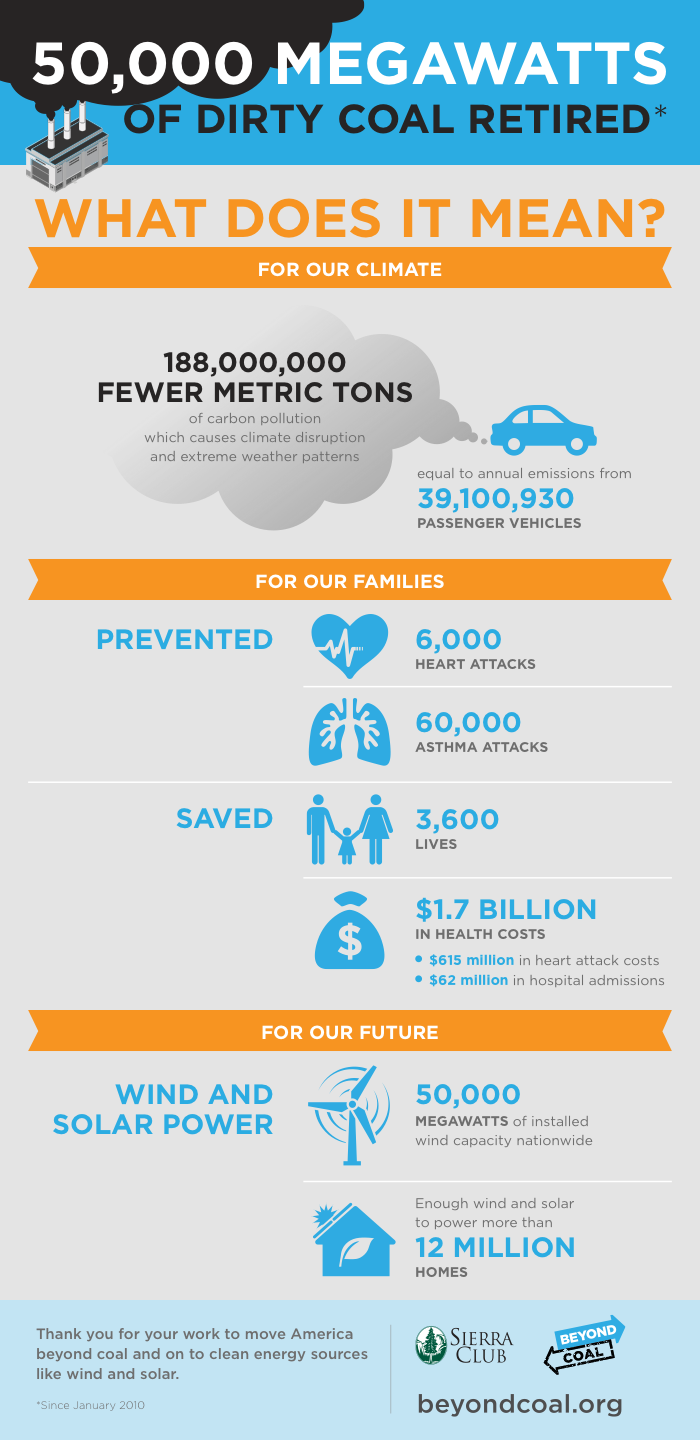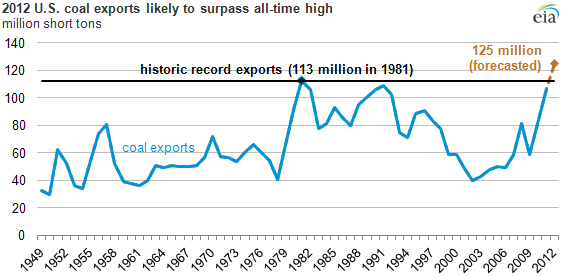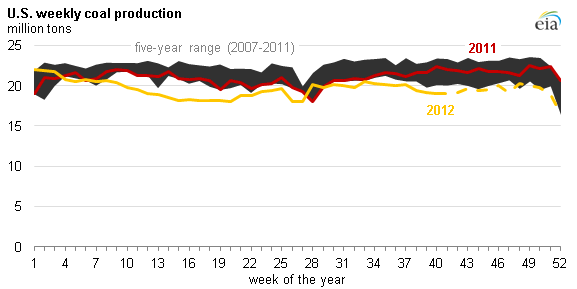Environment & Energy
Related: About this forumRetirement of Seven Coal-Fired Boilers Marks 50,000 Megawatts of U.S. Coal to Retire Since 2010

In 2012, the Sierra Club notified MidAmerican that it was violating the federal Clean Air Act at its Walter Scott, Riverside and George Neal coal plants, by emitting more pollution than allowed by its permits. Today’s settlement filed in federal court in Iowa resolves those allegations. According to the Clean Air Task Force air pollution from these three plants contributes to 45 deaths and 760 asthma attacks annually.
“Clean air, clean water and a booming clean energy economy are part of an Iowa legacy that I am proud to leave for my children and grandchildren,” said Pam Mackey Taylor, Chapter Energy Chair of the Sierra Club in Iowa. “Coal’s days are numbered here in Iowa. Pollution from MidAmerican’s coal-fired power plants causes major health problems in communities across Iowa. Retiring units at these coal plants and installing vital pollution controls at the remaining units will help Iowans breathe easier.”
Today’s announcement brings the total number of coal plants retired or announced to retire since 2010 to 130 plants and 50,717 megawatts, almost one sixth of the nation’s entire coal fleet. In 2009 these coal plants emitted more than 188 million metric tons of carbon pollution the equivalent annual emissions of more than 39 million passenger vehicles. These plants also emitted more than 7,600 pounds of mercury, a potent neurotoxin, and caused 6,000 heart attacks, 60,000 asthma attacks, and 3,600 premature lives annually.
...
NoOneMan
(4,795 posts)Green Utopia, here we come!

Oh yeah I forgot about that.
NoOneMan
(4,795 posts)Strangely, even the Sierra Club is involved in obfuscating this issue
Yes, our consumption is dropping, but our exports are increasing along with our export capacity to fuel the world's thirst.
Pretty graphics don't like to remind us of that. Maybe with all the dough we can put some solar panels in parking lots. Thatll look real future techy.
limpyhobbler
(8,244 posts)I guess it must be good to move our domestic energy production off of coal. But we also need to block coal exports too and that's a separate but related issue.
NoOneMan
(4,795 posts)"Green" energy means dick if we cannot guarantee we stop global consumption of "dirty" energy. Mankind essentially needs to make it illegal and an act of war to touch this stuff; there is no more of a reason to think we will do that at a magical point in the future than now IMO.
limpyhobbler
(8,244 posts)Might as well make every effort to save the good things. Significant adaptation is going to be needed regardless.
OKIsItJustMe
(19,938 posts)NoOneMan
(4,795 posts)We are quitting coal faster than we can currently export it. A couple places, like Coos Bay Or, are working on fixing that.
Checkout:
http://truth-out.org/news/item/13869-the-us-coal-industry-wants-to-boost-exports-to-asia-native-american-tribes-stand-in-the-way
The Cherry Point terminal is being proposed by global shipping company SSA Marine, and the company has already signed coal-supply contracts with Peabody Energy. Three more coal terminals are planned along the Columbia River. The Australian coal-transport company Ambre Energy and Arch Coal want to ship 44 million tons annually from Longview, an industrial port in Washington. Ambre also wants to move coal by barge down the Columbia River from the Port of Morrow to Port Westward in Oregon, from where it would ship out 8.8 million tons of the fuel to Asia. Texas-based conglomerate Kinder Morgan plans to build an export facility at Port Westward that would handle up to 30 million tons of coal, but its project is currently stalled because the company is facing problems leasing land. Another terminal is being considered at Coos Bay in Oregon. If all five ports get built, it could mean up to 150 million tons of coal exported each year from the Pacific Northwest.
Nihil
(13,508 posts)happyslug
(14,779 posts)http://www.energywatchgroup.org/fileadmin/global/pdf/EWG_Report_Coal_10-07-2007ms.pdf
Notice the two DECLINES, first is in term of ENERGY OUTPUT of the Coal mined. We are mining more coal by weight, but that coal is capable of producing less energy. One of the reason is that the richest coal in terms of energy is Anthracite, then Bituminous, then Sub-bituminous then Lignite, then "Slack" (Which is a Western PA term for something that did not have enough carbon in it to burn, so it was NOT coal, but had enough for water to come out black so it was useless to use as slate. That lead to the old saying "She was only a Coal miner's daughter, you could tell by the slack in her pants" i.e. None).
Bituminous is the coal from Pittsburgh to Illinois's, it is the coal that propelled the Industry Revolution in the 1800s and 1900s (till replaced by oil). It is much richer compared to Lignite, but also high in Sulfur (i.e. Acid Rain) but its ash absorbs Mercury.
Lignite in the Coal from the West. Reagan set the Sulfur limits so you did NOT need Scrubbers if Coal fired Generator switched to Sub-bituminous or Lignite, but had to install one if the coal fired generator stayed with Bituminous. Since the Eastern Bituminous mines tend to be UMWA mines, while the Sub-bituminous and Lignite mines in the West were not, you know which one Reagan's administration supported.
Energy output per ton of coal, per type of coal:
Anthracite: 30 MJ/kg
Bituminous coal: 18.8–29.3 MJ/kg
Subbituminous coal: 8.3–25 MJ/kg
Lignite: 5.5–14.3 MJ/kg
The Second decline, is the reduction in productivity by tonnage since 2000, i.e. it is taking MORE man hours to mine even less coal. i.e. the coal that remains is getting harder and harder to get out.
Side note: the paper referred to uses the term "Hard Coal" then it is normally used in the US. "Hard Coal" in the US is Anthracite, "Soft Coal" is Bituminous. Lignite was NOT given a name for it was NOT mined extensively till after WWII. In the attached Paper, Anthracite, Bituminous and Sub-bituminous are called "Hard coal", the term "Soft coal" is NOT used, but Lignite is used for all other types of coal.
Side note: No one has studied the effect that Lignite coal, which releases Mercury when it burns, replacement for Bituminous, which is known to absorbs Mercury when it burns (i.e. the switch from Bituminous to Lignite may be the reason for the increase in Autism over the last 30 years, for Autism mimics Mercury poisoning, and coal as the source of Mercury is a better explanation of Autism, if Autism is based on Mercury, then vaccination shots which contained Mercury).
Side Note: I remember during the Reagan Administration the fight over the Scrubbers on Coal fire plants (The scrubbers were design to remove Sulfur after the coal was burned so the Sulfur would NOT enter the atmosphere and cause Acid Rain). The debate was on how low was Reagan's Administration was going to set the sulfur limit. If they set it as low as environmentalists wanted it to be, it would be so low that no matter what coal the generator would use, they had to install Scrubbers. If that was the case, the Generators would have stayed with Eastern Bituminous coal for its higher energy content. On the other hand, if the sulfur limit was NOT set that low, then it would be cheaper to import Lignite coal from the West then install the Scrubbers. It was a big fight, and Western Lignite Coal won, and over the next 20 years you saw more and more Generators switch from Eastern to Western Coal. In New Florence Pa, a huge electric generator was build outside one of the largest mine in Western PA. The mine closed over then years ago and today the coal is imported from the West.
LiberalEsto
(22,845 posts)happyslug
(14,779 posts)The reason the GOP was able to win the Congressional Seat out of Johnstown PA was due to the "War on Coal", enough people tied in with the coal industry decided to vote GOP to save "Coal" even through the Democratic incumbent had all that could be done to support coal production.
And for musical enjoyment:
http://www.treehugger.com/corporate-responsibility/treehugger-tradition-well-never-forget-clean-coal-carolers.html
http://www.treehugger.com/corporate-responsibility/treehugger-tradition-well-never-forget-clean-coal-carolers.html
limpyhobbler
(8,244 posts)It's the same in southeast Ohio, where my parents live. Even if Democrats are able to win, nobody is willing to cross coal because people are convinced coal=jobs.
Yet somehow the Public Utilities Commission of Ohio just killed the Turning Point solar farm in the southeast area that would have created 600 jobs. And they definitely need that. It would have been the largest solar farm east of the Mississippi.
The head of the PUCO is a climate denier appointed by John Kasich.
happyslug
(14,779 posts)Average weekly coal commodity spot prices for week ending January 18, 2013
(dollars per short ton)
Central............Northern ........Illinois......,,,...Powder............Uinta
Appalachia.......Appalachia.......Basin.............River Basin.......Basin
12,500 Btu.....13,000 BTU.....11,800............8,800Btu.........11,700 Btu
1.2 SO2...........<3,0 S02.........5.0 SO2...........0.8 SO2.......0.8 SO2
$68.05..............$62.10...........$47.90.............$10.15..........$35.85
http://www.eia.gov/coal/news_markets/index.cfm
Notice the two biggest factor in coal price, British Thermal units per ton and SO2 amount in the coal. "Northern Applachia" is generally Pittsburgh Seam which is considered the best coal for Steel Production and thus tends to hold a premium in price (Through the further processing by making the Coal into Coke is needed for most Pittsburgh Seam coal has to high amount of Sulfur in it to be used directly in Iron or Steel making).
http://en.wikipedia.org/wiki/Pittsburgh_coal_seam
